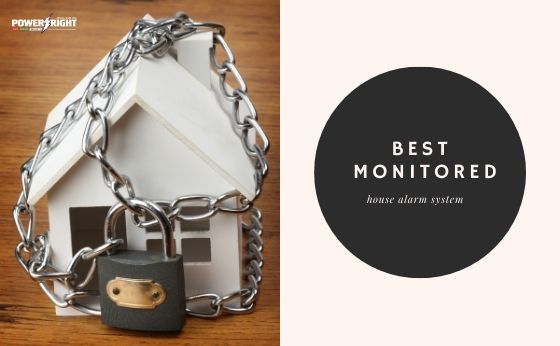
Did you know that as many as one-third of Irish people reported having been a victim of a break-in? One of the most effective ways to avoid such incidents is installing a home security system.
Depending on your needs, you may choose one of a few options available on the market. There are wireless, wired, self-monitored, non-monitored and monitored alarm systems. More and more people are becoming conscious about the security risks and try to find the best monitored alarm system.
Monitored alarm systems provide detailed and quick communication between your alarm control panel and your security provider. When a break-in, fire or other emergency is detected, it notifies a security company and appropriate authorities. Customers have to pay a fixed fee for the monitoring service.
Non-Monitored Alarm Systems
If the system is not monitored, then the alarm bell will ring for about 15 minutes once activated. The aim is to scare off the intruder, attract the neighbours’ attention or wake up the owner.
Such a system is less effective as there is no follow-up action, meaning no keyholders or authorities will be contacted. A non-monitored alarm system is more expensive, usually €800 – €1,000 for a good standard one.
Self-Monitored Alarm System
Another option is to have your home alarm system self-monitored. It usually functions as a text service. Whenever your alarm is activated, you get a text message (email, push message). However, it doesn’t guarantee a Garda response. Since 2008, Garda can only respond to verified break-ins, and a text message can be simply a false alarm.
Also, if you are at work, you usually pay no attention to your phone, so you won’t be able to respond. Consider some hidden costs, as you may need to pay for call-out fees or your alarm system maintenance.
Monitored Alarm System
A monitored alarm system is probably the most reliable option as monitored houses are believed to be three times safer than non-monitored. Furthermore, the statistics say that 84% of the burglars avoid houses with a monitored home alarm.
Whenever an intrusion sensor is triggered, an agent will try to contact you or any of the nominated keyholders. If no one responds, the agent or the monitoring station can dispatch the Gardaí immediately. In this case, you have staff working 24/7 to ensure your home security.
The upfront cost on such alarms is lower, but you have to pay the monitoring costs. So, the fees will be spread out throughout time. Many monitored companies include annual service, maintenance, unlimited call-outs, and technical support in their monthly fee.
It is important to note that the homeowners can decide who monitors their house. Once your contact with your initial security provider expires, you are free to switch to whichever company offers the most peace of mind and the best value.
DIY Home Security System
Such DIY kits are ideal for a budget shopper, as you do not have to pay extra charges for installation and subscription. Most do-it-yourself systems can be configured and extended according to your needs.
The entry-level DIY system can support a pair of wireless protocols and just a couple of additional components, whereas a more expensive DIY security system can support a wide range of add-ons.
Most of the DIY home security systems can be self-monitored via mobile app. This app usually allows you to monitor the sensor status, to arm and disarm the system, to view the video (live and recorded).
Moreover, many vendors suggest professional monitoring services or pay-as-you-go plans. This mode lets you pay for alarm monitoring only for a certain period of time, for example, when you are on vacation.
Professional Home Security Systems
Even though many components can be easily installed in no time, some of the high-end systems will call for professional help. These are usually the best monitored alarm systems, which cost considerably more than DIY options and require committing to a multi-year contract or paying a termination fee if you prefer to break it.
Such alarm systems may use touch-screen panels and Wi-Fi, RF, Z-Wave and Zigbee radios to control several security components such as window and door sensors, locks, indoor and outdoor cameras, glass break detectors, smoke/CO alarms, video doorbells, motion detectors, thermostats, and some other home automation devices.
Practically all of the latest professional and DIY home security systems offer voice control support via Google Assistant, Amazon Alexa, or Apple Siri. Such a feature allows a user to change thermostat settings, open the garage, unlock doors, and arm or disarm the system with a spoken command.
Moreover, some of them can support a freeware web-based service If-This-Than-That (IFTTT). For example, you can create an applet that says turn on the light, if a garage door is opened.
Alarm Panels and Sensors
Not all the alarm panels on the Irish market are the same, so it is important to know what features the panel has. Some panels allow to set up arm all sensors setting (perfect when nobody’s home) or only perimeter protection (for staying safe at home). Some come with emergency panic buttons for Gardaí, fire brigade or an ambulance.
In terms of sensors, make sure to protect your peripheral doors and vulnerable windows. More than 50% of burglars enter through a back, front or side doors. To verify break-ins, the Gardai require at least one motion or internal sensor. Otherwise, it is up to you how to secure your housing.